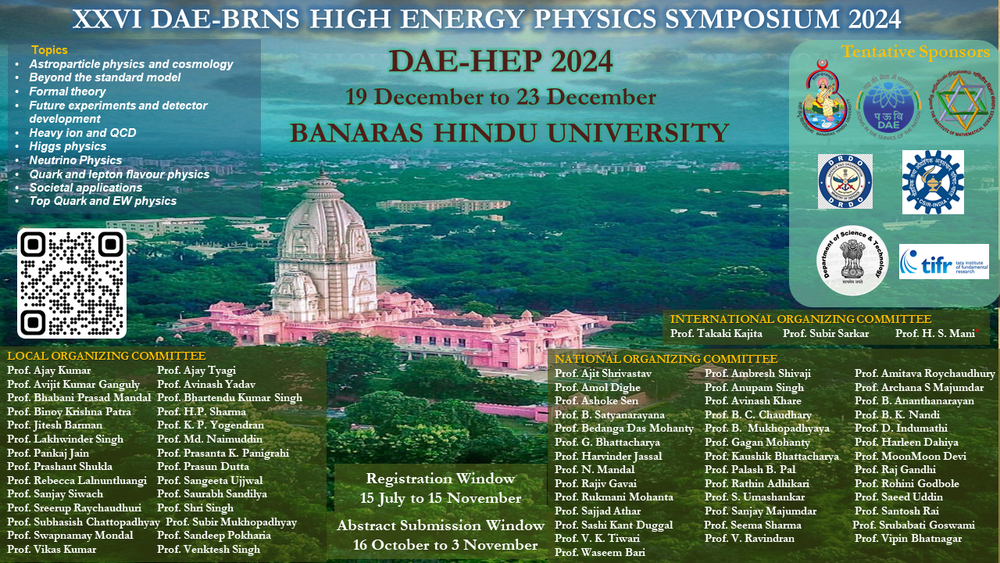Speaker
Description
The precise measurements of interactions of the Higgs boson with the particles of the Standard Model (SM), especially electroweak gauge bosons, at the LHC, serve as indirect probes of heavy new physics. To facilitate this, we consider a theoretical framework based on amplitude approach in which the most general amplitude for a process can be factorized into a set of primaries, which are finite in number, with each multiplied by a series in Mandelstam variables, called descendants. A connection between this amplitude expansion with the partial wave expansion is established by identifying the primaries as the minimum-$J$ amplitudes. Considering the Higgstrahlung process : $f\bar{f} \longrightarrow Z(ll)h(b \bar{b})$, a set of independent primary amplitudes linked to the independent helicity combinations are identified by considering contributions from both 3-point and 4-point couplings. These primary operators do not always appear at the leading order in the EFT expansion (for e.g. not at dimension 6 for SMEFT), but they do provide the leading contribution to particular experimental observables. Finally, we propose observables, called angular moments, as coefficients of independent differential distributions in three different angular variables at the level of $Z$-decay products. These observables are useful to probe the partial wave amplitudes corresponding to the independent helicity combinations that receives dominant contribution from the primary amplitudes. This will help to maximally constrain all the effective couplings associated with the different vertex structures relevant for our process.
| Field of contribution | Phenomenology |
|---|

